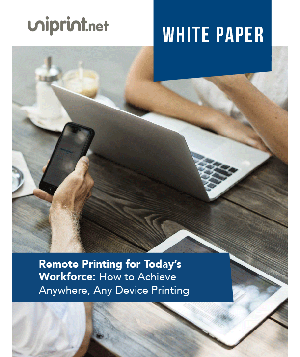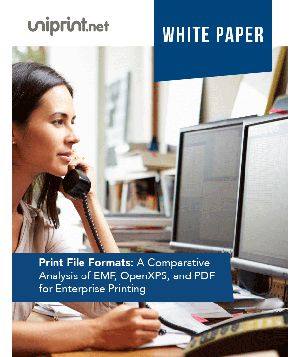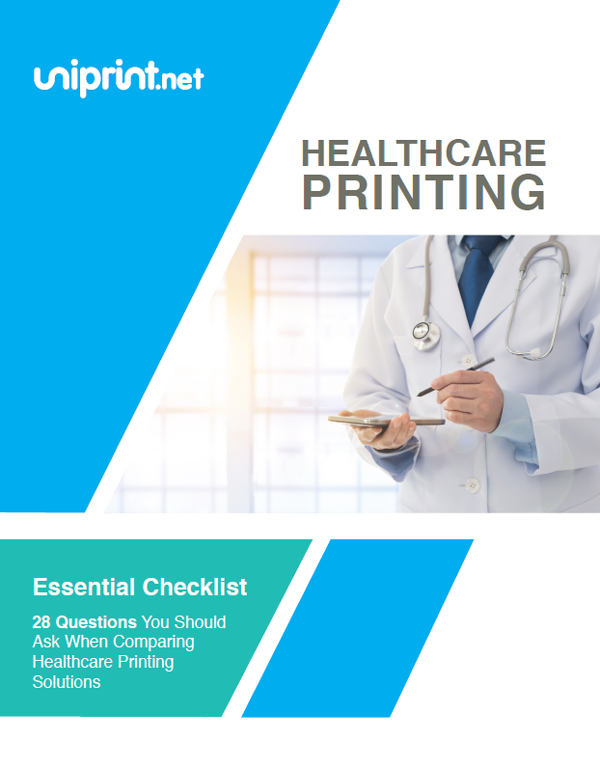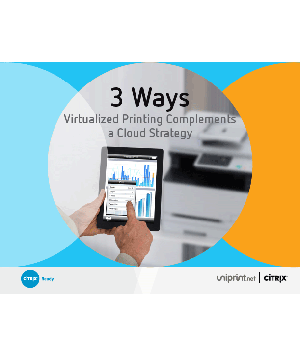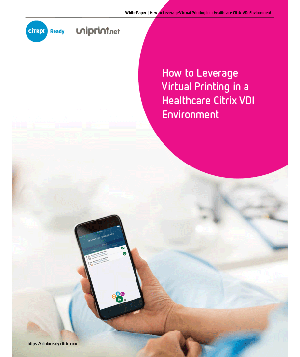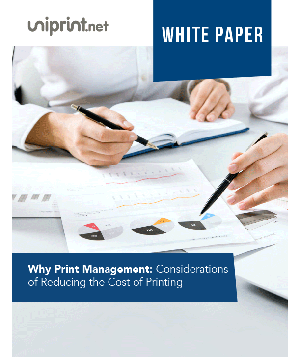UniPrint Infinity Brings the Benefits of Secure Follow Me Printing
UniPrint Infinity brings the benefits of follow me and secure printing to multi-vendor print environments James Goulding reports.
Secure print systems that require users to identify themselves before a document is output are a popular way of reducing print volumes and improving document security.
According to most estimates, 10-20% of pages sent to a secure print server are never pulled down for printing, indicating that a large proportion of what we print we don’t actually need.
In normal environments without a secure print system, these pages would be output as soon as the user pressed Print incurring a significant financial and environmental cost.
Secure print systems are a common feature of MPS engagements where paper reduction is a priority, not least because they provide an additional source of hardware and software revenue for the MPS provider.
One criticism of existing solutions is that they are often vendor-specific or require printers/MFPs with a high level of functionality, such as a touchscreen display – again, good for the vendor but expensive for the customer.
Recognizing that many businesses have mixed vendor fleets and machines with diverse capabilities, printing virtualization specialist UniPrint has built on its heritage in terminal-based computing and developed a device-agnostic secure print system that will work with any print device, in any print environment and with any application.
We are vendor independent and our software can co-exist with existing printers,” explained Arron Fu, VP of software development at UniPrint. “Our software sits on top and enables pull printing without being stuck with a single vendor. If a customer wants secure print, they don’t have to bind themselves into a solution from HP, Xerox or Canon.
A lot of enterprise customers don’t want to do that,” he said. Called UniPrint Infinity, the solution brings together the companies established universal print driver with a network attached tablet, or ‘vPad’, on which users can identify themselves using a PIN, network ID or swipecard (the pad has USB connectivity to accommodate off-the-shelf card and RFID readers).
There is also the option of a software-based ‘virtual pad’ that can be installed on an existing Windows XP device that a customer might have lying around, helping to reduce the total cost of ownership. In the future, the ‘virtual pad’ could be embedded within devices and UniPrint is currently exploring the possibilities of entering OEM arrangements with device manufacturers.
How does UniPrint Infinity Work?
Step 1: Printing
UniPrint developed its first universal print driver in 2000 to solve problems in terminal server-based computing where remote users had problems printing to desktop printers because of instability and incompatibility problems.
It has now introduced similar software to support day-to-day office printing. The PDF-based UPD provides a consistent interface between the user and a print server that holds and manages print drivers for individual devices.
This gives office workers the same look and feel regardless of make or model of printer used; simplifies the deployment of new devices or upgrades; and reduces the need for training.
The system converts print jobs into encrypted PDFs that can be printed, saved or emailed and in the process compresses files by up to 90% for more efficient use of bandwidth.
Other useful features include the capability for an IT administrator to define one-click printer profiles for recurring print jobs or for specific users to control how they print.
In normal use, the UniPrint driver displays a list of available printers and the user clicks on the one they want to print to. With the UniPrint Infinity secure print solution, they choose a virtual print queue instead.
Step 2: Releasing the Print Job
In order to pull a print job down from the server for output on the device of their choice (follow me printing), a user must first type in their name and authenticate themselves at a network-attached vPad or software-based virtual vPad.
For maximum security, a document can be protected with a secure PIN and in such cases this, too, will need to be entered. Once this has been done, the user just has to select the relevant print job from their personal queue and the printer they want to print to.
Depending on their needs, a customer could have a vPad next to each printer or they could share a unit between multiple devices.
UniPrint claims that the simpler device management and lower print volumes that follow an implementation of UniPrint’s Infinity follow me and secure print system will enable customers to cut print costs by 35% and still retain the freedom to deploy best-of-breed devices from multiple suppliers.
The company is already looking ahead to the next version. Due out next year, this will include a number of enhancements, such as support for mobile printing directly to the vPad; archiving and monitoring, which will capture all print jobs and flag up any sensitive information being posted and save it for audit and compliance purposes; and policies to enforce mono or two-sided printing.



